iNaturalist, launched in 2008 and owned by the California Academy of Sciences and the National Geographic Society, is one of the best online resources available to natural history enthusiasts who want to explore biodiversity and share their observations from the field with experts. Part community science hub, part scientific tool, and part social media platform, iNat, as it is known among users, has a global reach with 5.9 million users, more than 124 million observations since its founding, and more than 410, 000 species observed as of the end of January 2023.
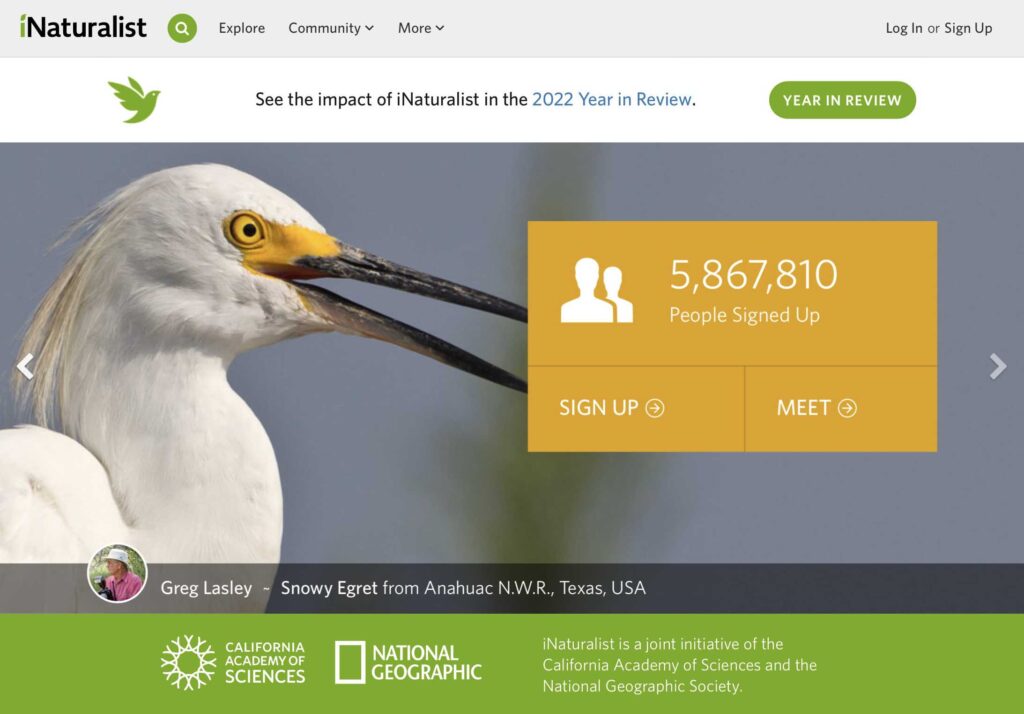
For curious users, the iNat app can offer instant gratification by identifying a species within seconds from a smartphone photo and geographic location data. Many iNat users, however, derive further satisfaction from knowing that they are contributing to science when their observations are added to databases used for research by scientists, conservation experts, land use managers, and policy makers.
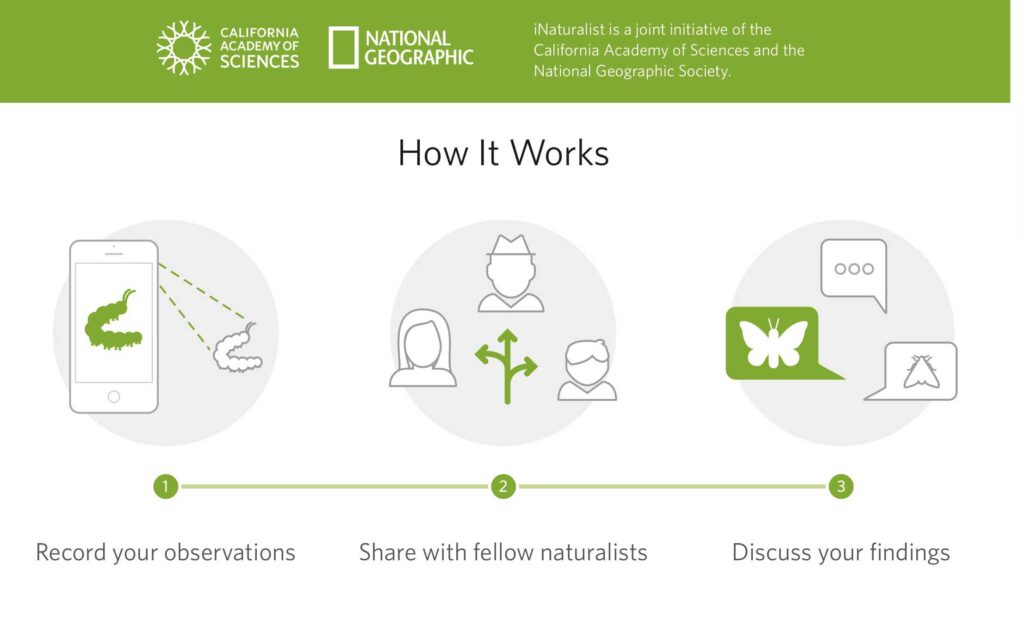
Community science is what attracted me to iNat. As an amateur naturalist, I wanted to make a contribution to conservation and science but didn’t know how to go about it. I spent a fair amount of time in the field birding, hiking, and enjoying “nature,” so there had to be a way to combine my interests.
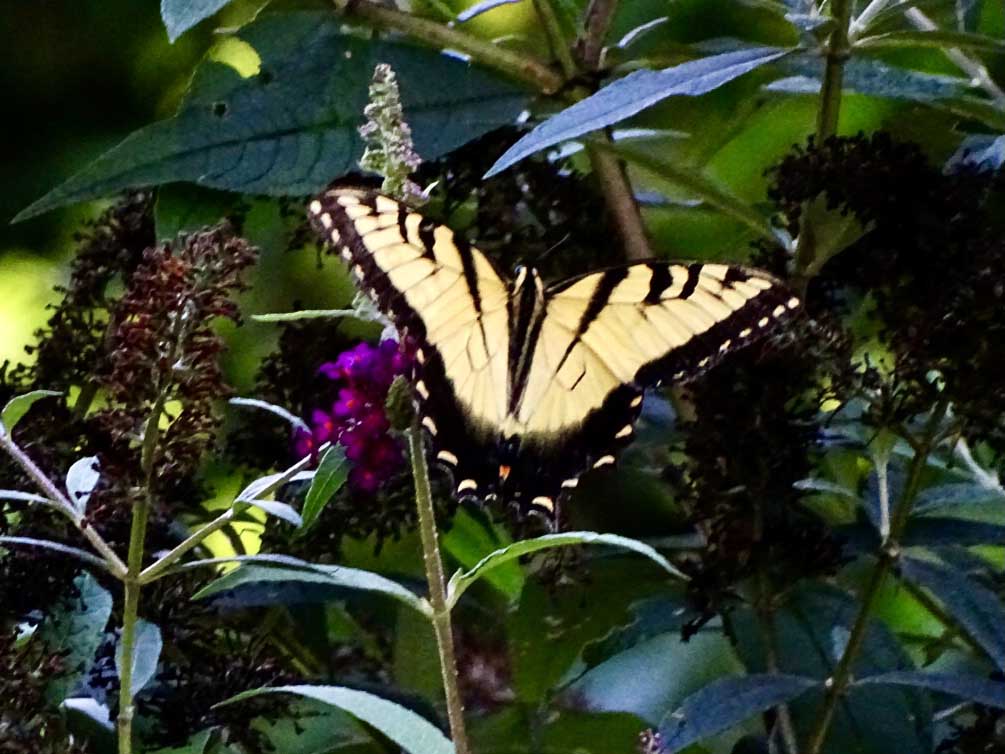
I discovered iNat one spring when I volunteered to participate in a four-day bioblitz. Everyone was required to use this tool to document observations of any species within a geographic boundary. The first morning of the bioblitz I downloaded iNat from the app store on my phone, created a log-in, took a photo of a butterfly and submitted it through the app. It took a moment for iNat to identify it as an Eastern Tiger Swallowtail and provide a photo and a description of the butterfly. Wow! I was impressed with this fast, user-friendly, and accurate technology.
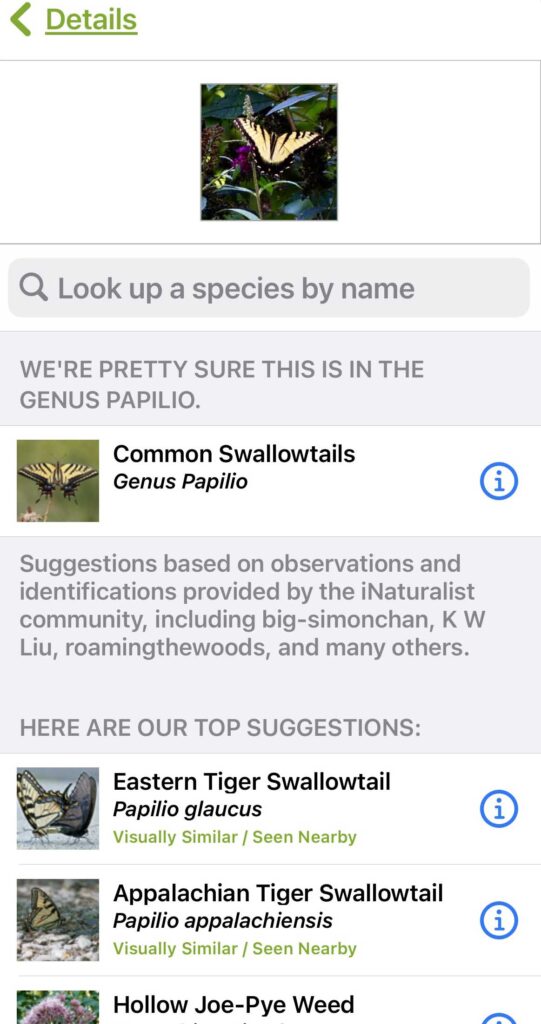
I submitted my observation to the iNat database, and a few hours later a botanist agreed with my ID. The status of the report was then raised to “Research Grade,” meaning that my butterfly observation became part of a dataset searchable by experts doing research in such areas as ecology, conservation, and climate change. In this way, I was able to participate in community science while following my interests in natural history.
iNaturalist is so easy and fun to use that I was hooked after that first bioblitz weekend. Since then, I have added more than 16,000 observations of plants, birds, insects, fungi, lichen, reptiles, mammals, amphibians, fishes, and the occasional arachnid. Using the iNat app, I have identified rare birds and glittering dragonflies, beautiful butterflies, bold snakes and tiny toads, amazing fungi and fields of dazzling wildflowers.
Over time, I realized that my behavior in the field was changing, too. The familiar “screen of green” that I saw when looking at an area filled with plants was being replaced by individuals; I was beginning to learn specific trees, grasses, wildflowers, shrubs, and more. I was observing details, and striving to take quality photos because a good photo adds information to the artificial intelligence software that iNat uses to suggest IDs and makes it easier for other users to agree or disagree with your original identification.
Some iNat users prefer to identify the observations of others. iNat has a comments field where users can leave notes about why they agree or disagree with an identification. Occasionally, controversy arises when users don’t agree, but this provides an opportunity to learn from others who may be more experienced.
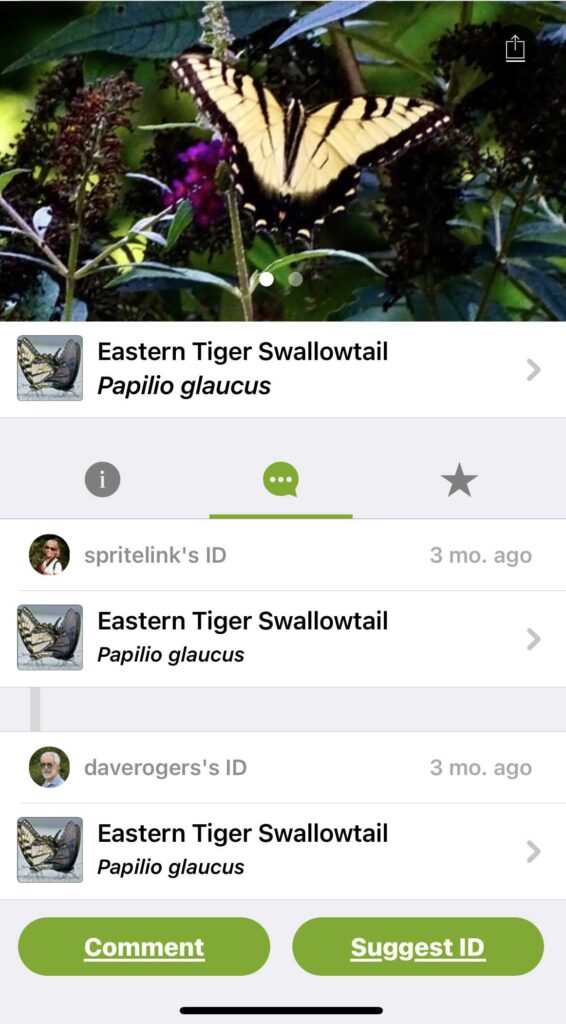
The iNat app is streamlined and very easy to use. You can add photos automatically while you are in the field or save them to upload later. Other iNat users, amateurs, and experts alike, will add their ID to yours with the goal of getting your observation to Research Grade so it can be available to scientists. The app conveniently keeps a running list of your most recent observations. A relatively new addition is the ability to add sound recordings to aid in identification.
While the app is meant to be used while on the go, the iNaturalist.org website is robust and offers other ways to explore. You can manually add observations and sound recordings through the website; you can also do searches of your own observations and those of other iNat users. You can create a profile and add your photo, if you like, and connect with other users. You can filter by species category, location, date, grade, or user. User guides are available for project managers and for teachers.
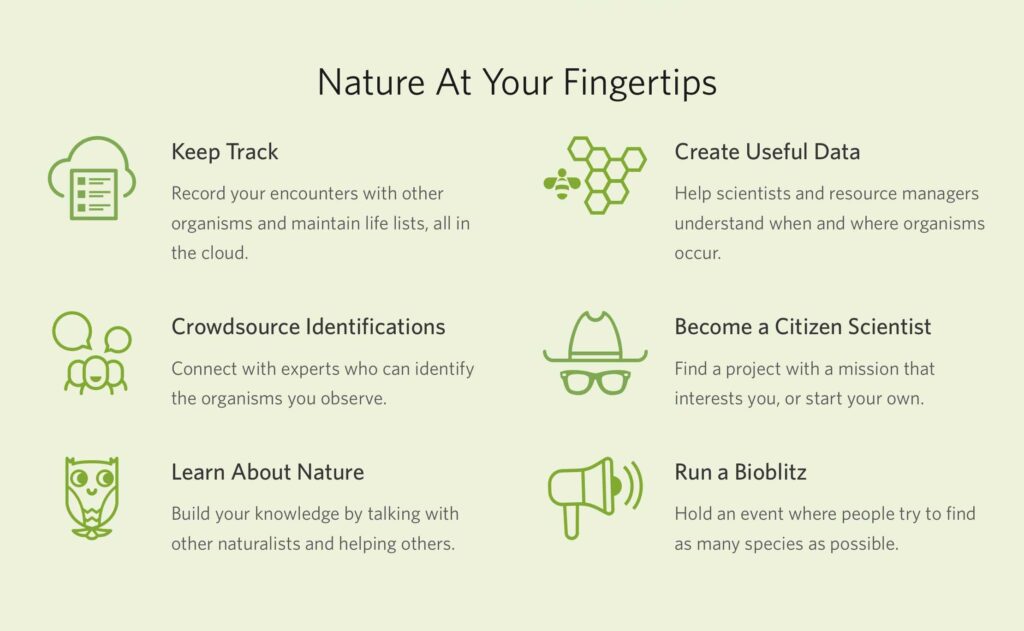
iNat users have discovered new species and documented previously unseen behaviors in animals, adding to the excitement of community science. It offers many rewards for nature enthusiasts who want to make a contribution to science. The more users, and the more observations from anywhere in the world, the better.
— Janet Wooten

